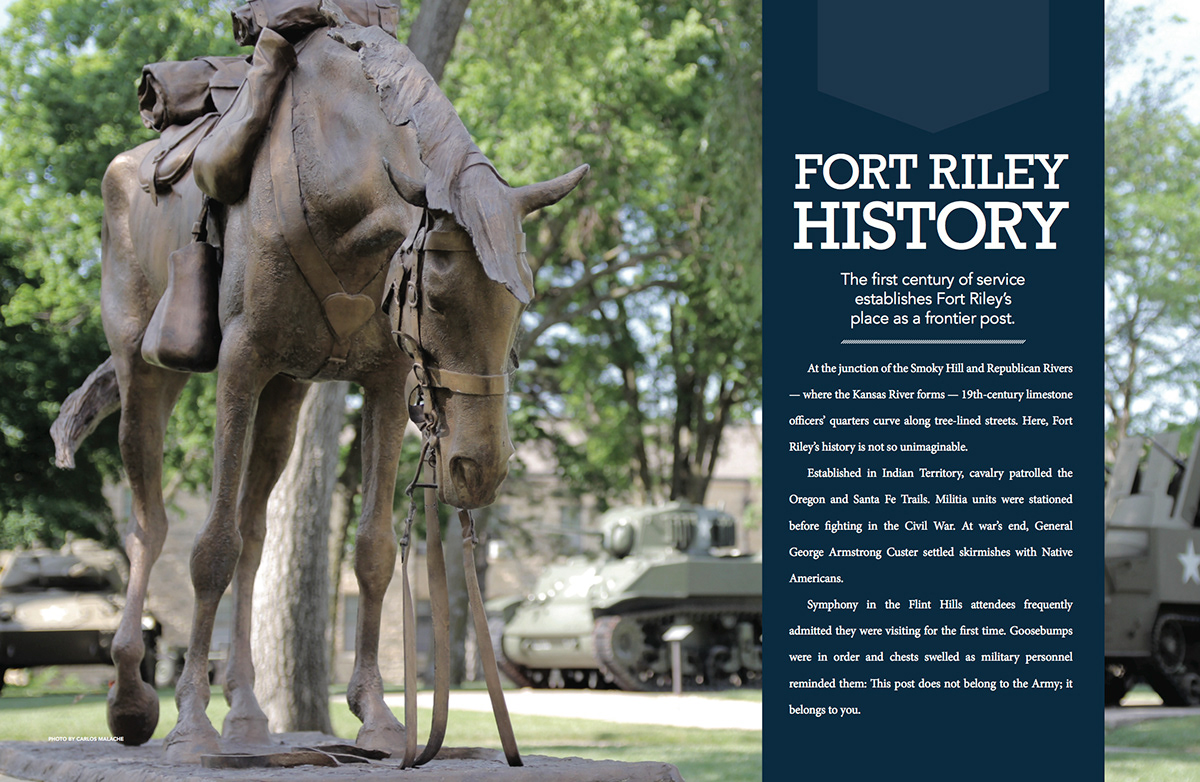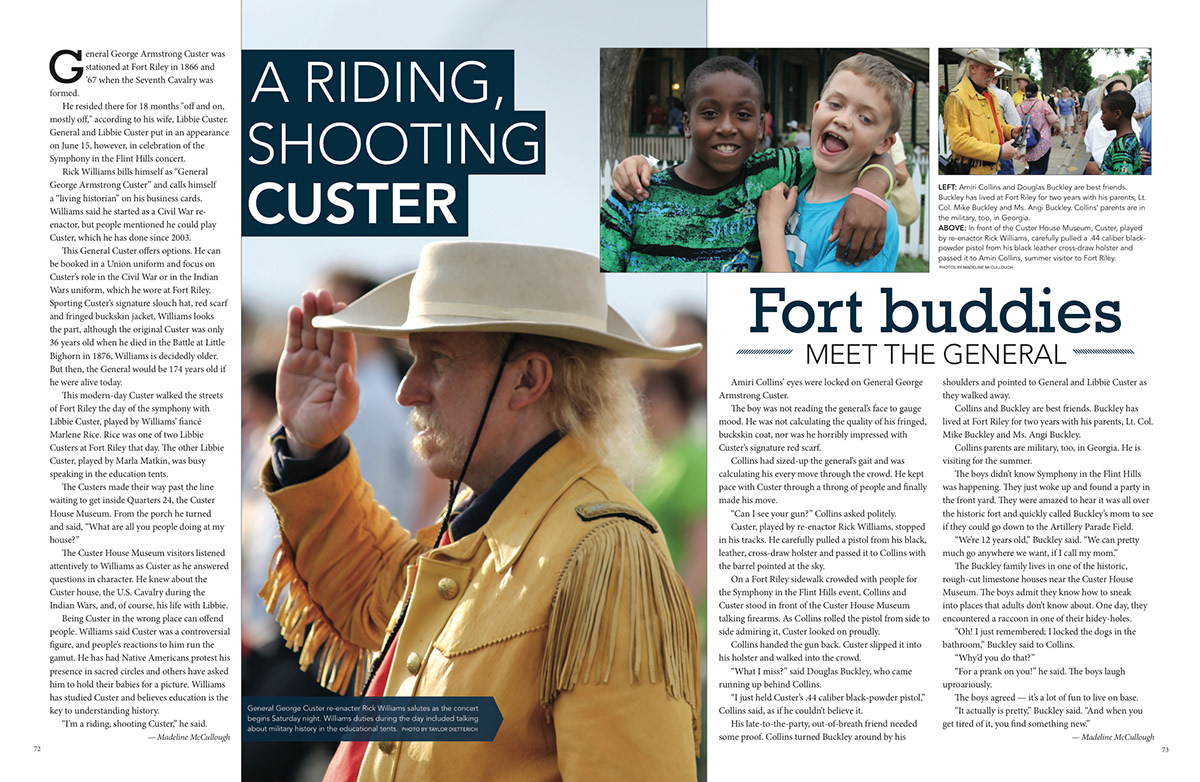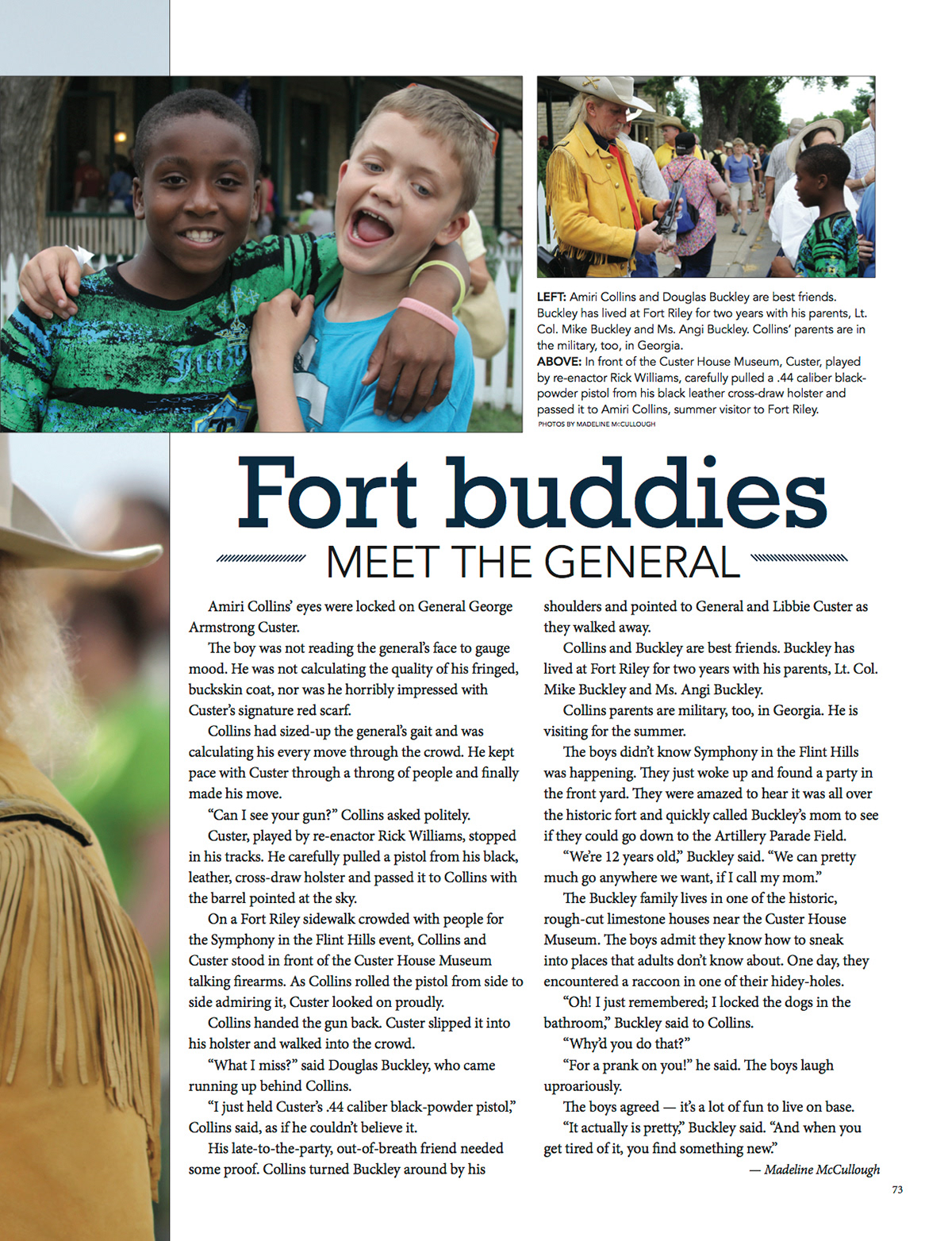
The first century of service establishes Fort Riley's place as a frontier post.
At the junction of the Smokey Hill and Republican Rivers — where the Kansas River forms — 19th -century limestone officers' quarters curve along tree-lined streets. Here For Riley's history is not so unimaginable.
Established in Indian Territory, cavalry patrolled the Oregon and Santa Fe Trails. Militia units were stationed here before fighting in the Civil War. At war's end, General George Armstrong Custer was stationed here to settle skirmishes with Native Americans on the plains.
Symphony in the Flint Hills attendees frequently admitted they were visiting Fort Riley for the first time. Goosebumps were in order and chests swelled as military personnel reminded them: This post does not belong to the Army; it belongs to you.

Two stories from historic Fort Riley, Kansas: "A Riding, Shooting Custer" and "Fort Buddies."

General George Armstrong Custer was stationed at Fort Riley in 1866 and '67 when the Seventh Cavalry was formed. This re-enactor, Rick Williams, took part in the Symphony in the Flint Hills event June 15, 2013. (Photo by Taylor Dietterich)
Amiri Collins and Douglas Buckley are best friends. Buckley has lived at Fort Riley, Kansas for two years with his parents, Lt. Col. Mike Buckley and Ms. Angi Buckley. Collins' parents are in the military, too, in Georgia. The boys say it's a lot of fun to live on post.


